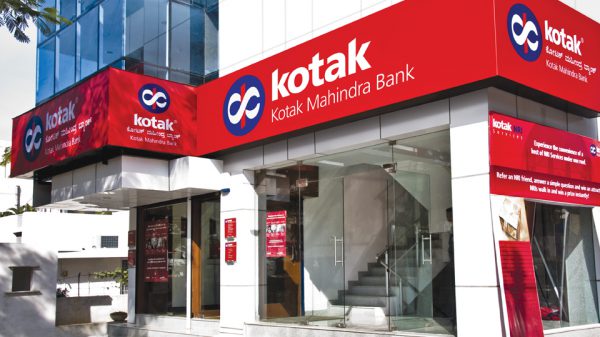By Amba Kak
Part 2 Summary
The regulatory crackdown on VAS may have exposed the flaws of a speculative business model. And while acknowledging that Minimum Guarantees (MG) hinder growth, music labels and content aggregators are convinced MGs are indispensable given the trust deficit. Allegations of obfuscation and falsification of data span through every layer of this market. The post explores possible technical solutions (such as mime360 and OnMobile’s Atlantis) as well as legal remedies in the amended Copyright Act.
In May 2013, Flyte, an online music store, announced that it would be shutting down. Dhingana, an online streaming platform that boasted of 10 million active users also announced closure in early 2014. Flyte officially cited piracy and the barriers to accessing the telecom operators’ payment channel as reasons for closing down its business.
In a market with no clear ideas on a successful business model, every failing enterprise is analyzed for the lessons it uncovers. Industry insiders and journalists offer an additional theory for the closure of Flyte and Dhingana — that of unsustainable cost of content. The success of these services depended, in part, on the extent and variety of content that music labels are willing to make available through this medium, and at what cost. The minimum guarantees demanded by music labels were leaving these online platforms in a difficult financial position.
The minimum guarantee model is especially pervasive for film music. The amount of MG demanded by the film producer is purely speculative because the rights are sold before the album is even released. There is no data on the actual earnings made by a content platform from a particular catalogue. All that is known is how much was paid as minimum guarantee and that figure sets the standard for negotiations across platforms. It skews the market in favour of incumbent music platforms because it is near impossible for new, smaller entrants to generate such large amounts of up front capital and assume the consequent risk.
The flaws in this model, especially pervasive for film content, become apparent when we look at the example of VAS. As music Value Added Services (VAS) grew in revenues, minimum guarantees were soaring. Revenues were so enormous that despite soaring minimum guarantees, most stakeholders were still profiting. But the regulatory crackdown on false billing in VAS led to a significant decline in revenues, leading to a 10% fall in ringback tunes revenue in 2013. This unexpected regulatory move exposed the flaws of an ecosystem that relied entirely on speculative values for music catalogues.
While acknowledging that minimum guarantees hinder growth, music labels and content aggregators are convinced they are indispensable given the trust deficit. Allegations of obfuscation and falsification of data span through every layer of this market. Copyright societies and music labels make allegations against VAS companies, VAS companies against telecom operators. But transparency of the data is entirely defined and controlled by the telecom operators who control billing. As one industry insider put it “it is complete data capture in the hands of telcos”.
Solution one: mime360
One solution to this problem of distrust is a technical tool that gives content owners direct access to data. In 2011, mime360, a company started by Sameer Nigam, tied up with content owners to host their content in a format directly usable by digital platforms.[1] Online platforms or content aggregators directly integrated with mime360. Labels could now distribute their content through this network without the additional layer of content aggregators. They would also receive real time reporting of usage of their catalogues across platforms. This model, therefore, gave content owners control over their inventory and critically, transparency in terms of reporting sales and usage. In 2011, all major online platforms except Hungama and Saavn and 40-45% of the content owners were on board. [2] The company shut down early this year. Sameer Nigam admitted that there was trust deficit here too. Where information is power, several labels were threatened by one entity having all the consumption data and remained suspicious of their independence.
Solution two: Atlantis
Atlantis, OnMobile’s new technical intermediary platform, provides hourly reports of data relating to participating content owners and aggregators. In interviews with Atul Churamani, the then head of content at OnMobile, he described the unique tool. Unlike mime360, Atlantis does not host the music on its own servers. Content owners can directly upload their caller tune clips and related metadata, instead of OnMobile doing it. It receives a dump of download transactions which are captured and made available to labels. This tool responds to the trust deficit. No interference by Atlantis with the metadata would mean more faith in the records. The accuracy of the content owners’ record would depend on their ability to comprehensively submit metadata. Churamani notes“If a label sees 100 downloads on the online system, he can check the reconciled value reports for accuracy. A 5% variation is acceptable due to a failed transaction or a balance issue. Anything more will raise a red flag and the label can query the reconciled report with the operator, etc.” He confirmed tie-ups with several telecom operators and content owners through which the Atlantis reporting tool is used for ring back tones or “caller tunes” consumption reporting.
Transparency in reporting should ordinarily moderate the cost of content. Rather than speculative prices dictated only by the largest labels, negotiations can rest on actual demand for the catalogues. However, as mime360’s experience suggests, this may not necessarily hold true in the online segment. What was the effect of transparent reporting on the cost of content? The founders of mime360 say that far from doing away with the MG model, once they exposed the under-reporting in the ecosystem through real time logs, many labels actually used this data as a justification for increasing minimum guarantees, apparently in some cases by 6-10x!
This development reflects the mentality of content owners more than a failure of the technical platform. Labels prioritize maximizing immediate revenue over maximizing the accessibility of music across several platforms. They could have negotiated a lower revenue share but instead they chose to multiply the minimum guarantees. Because the online market is still nascent, the bargaining power rests disproportionately with labels. Nikhil Pahwa opines, “As the dependency on the online segment increases, market dynamic will change and hopefully so will the attitude of content owners.”[2]
Others are less convinced that this change would happen organically and advocate for government intervention and oversight at many levels. A technical tool to bring transparency in records is critical but will this work without a corresponding compulsory licensing regime? A compulsory licensing regime would compels rights holders to part with their content on non-discriminatory terms decided be law. This will be discussed in detail in the next post.
Solution 3: 2013 Copyright Amendment
Lack of transparency is also alleged at the stage of distribution of royalties among copyright societies who are tasked with collection and distribution of royalties to the content owners. Copyright societies are bodies created under copyright law to administer and manage copyrights on behalf of owners and authors of work. While the Indian Performing Rights Society Ltd. (IPRSL) manages copyright on underlying works (i.e. compositions and lyrics), Phonographic Performance Limited (PPL) manages copyright on sound recordings. The 2013 Copyright Rules aim to address the problem of non-transparency and corrupt practices in the distribution of royalties. This perhaps comes in response to allegations that copyright societies guarantee amounts to large music labels against the share of royalties due at the expense of smaller players. G.R. Raghavendra, Registrar of Copyright in India, confirmed in an interview that complaints were received regarding unfair distribution of royalties, for example, royalties were assessed based on size of labels and catalogue and not the number of plays.
The rules mandate that royalty rates be published on the website of the copyright society and that any revision in the tariff scheme be notified on the website two months in advance. They mandate that a society must have a “distribution scheme” which sets out the procedure for distribution of royalties specified in the tariff scheme and set out several rules for the same:
To be framed among the members within three months from when the copyright societies commence business.
Distribution shall be in proportion to the royalty income the copyright society derives for the specific category of work it administers for both authors and owners.
Post the amendment, IPRSL will also consist of both authors and owners and it states that there shall be no discrimination between authors and owners in the distribution of royalties. Royalties from underlying works shall be shared equally between authors and owners.
The distribution scheme shall aim to ensure that all royalty distribution are fair, accurate, cost-effective and without any unknown or hidden cross subsidies.
The parameters for how it will be apportioned among members will be transparent and easily understandable to members.
The distribution scheme shall be based on actual use or reliable statistical data that fairly represents the commercial exploitation of licensed rights.
No payments in the nature of minimum guarantee to members against royalties due to it.
The rules emphasize a distribution scheme that reflects actual use and statistical data. The Chairman of IPRSL, Rakesh Nigam admits that this large influx of data will require efficient technology but claims that IPRSL already has the infrastructure required to process such data.
To conclude, a tool that gives content owners direct access to transaction data is necessary to rectify the pervasive trust deficit in the market. The question is whether this technical solution should be in the form of a public-private partnership. Without the additional support and oversight of the government there will be distrust of the intermediaries. Apart from direct access to data, some online and VAS platforms vouch for a statutory licensing regime to address the heavy transaction costs associated with direct negotiations with labels and copyright societies.
* The status of these copyright societies is currently ambiguous. There are reports that they are no longer registered under the act due to a procedural lapse. This comes in the backdrop of calls to regulate the functioning of these entities.
****
References:
1. FICCI-KPMG Indian Media and Entertainment Industry Report 2014.
2. Industry Report Interview with Sameer Nigam, August 2013
3. Rule 58, Copyright Rules 2013.
4. Interview with Rakesh Nigam, December 2012.
****
Copyright Amba Kak. This article has been crossposted with permission.
About Amba: Amba graduated from law school in 2013 and is currently pursuing graduate studies at the University of Oxford on the Rhodes scholarship. She is interested in regulatory issues around competition, intellectual property, freedom of speech and privacy. As a recipient of the Google policy fellowship, she has conducted a study at CIS, Bangalore that looks at how music distribution technologies have impacted business models, licensing practices and copyright institutions in the India.





























